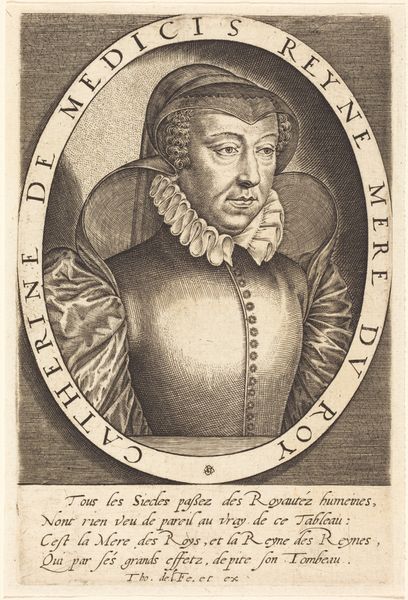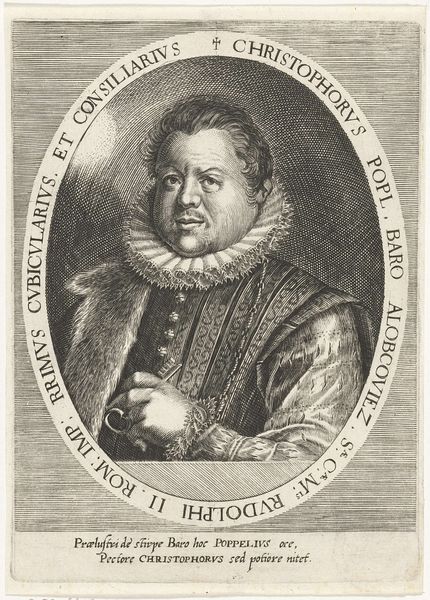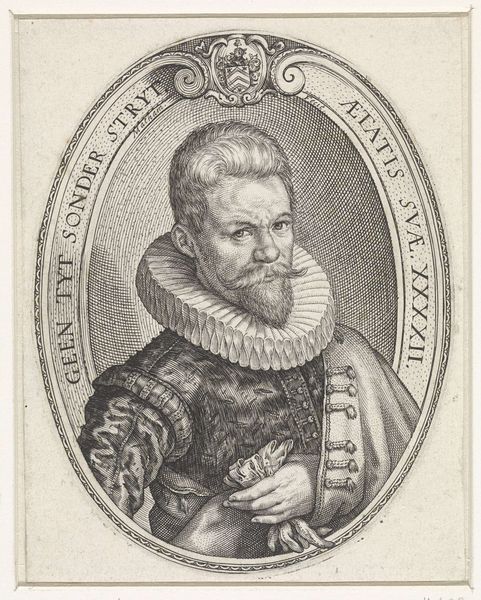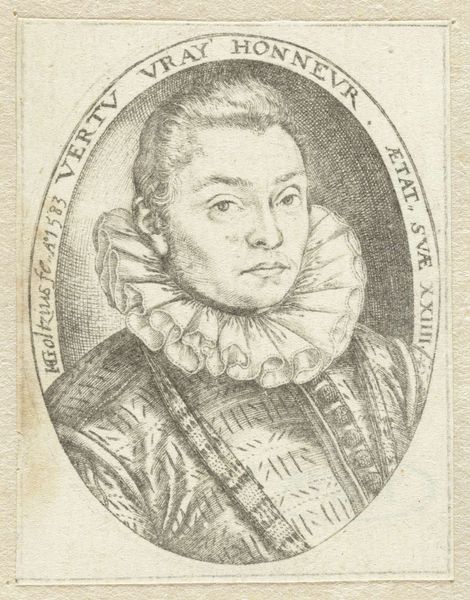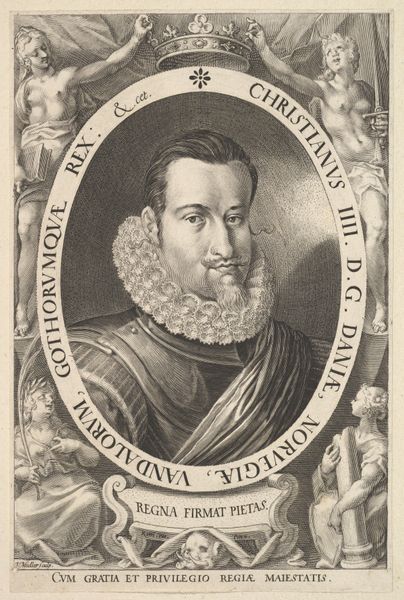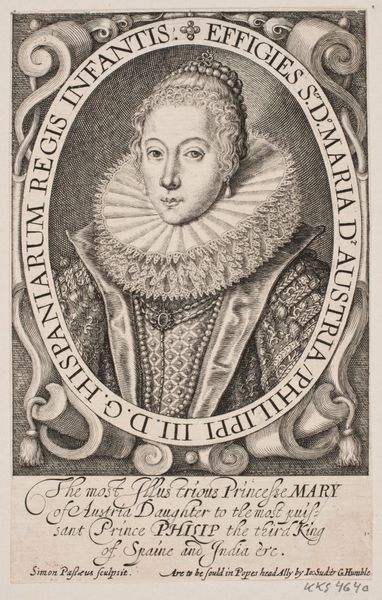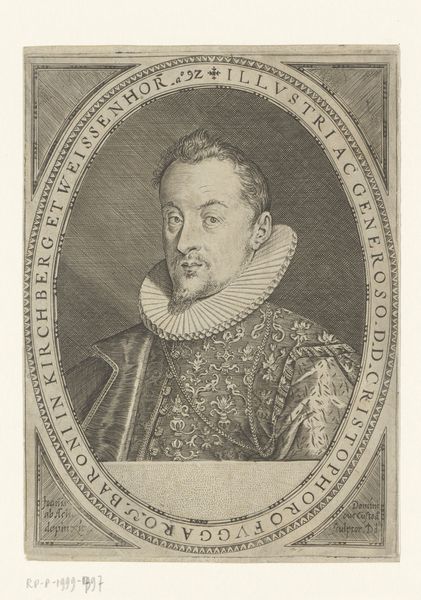
print, engraving
#
portrait
#
baroque
# print
#
old engraving style
#
caricature
#
portrait reference
#
portrait drawing
#
engraving
Dimensions: height 119 mm, width 93 mm
Copyright: Rijks Museum: Open Domain
Curator: Before us, we have Jacob Matham's engraving from 1602, "Portret van Albertus Eufrenius," housed right here at the Rijksmuseum. Editor: It has a somber quality to it. The hatching and cross-hatching give the piece such depth, and I can’t help but focus on the detail of that ruffled collar! The tight, oval composition only seems to amplify this mood. Curator: What I find so fascinating is the story behind prints like these. Matham wasn't just an artist; he was part of a network of workshops, printers, and publishers. These portraits were crucial in circulating images and ideas during the Dutch Golden Age, creating a sort of early form of mass media. The making of prints—engravings—depended on skilled labour and collaboration. Editor: Yes, but the pure craftsmanship on display! The precision of the lines, the tonal range achieved simply through their density and direction! The use of the oval format with the Latin inscription encircling the figure, sets the eye to follow certain elements, ultimately directing one's gaze back at the subject. It's all very considered. Curator: But also strategic. Consider the sitter. This Albertus Eufrenius clearly had the means to commission or purchase such a portrait. It tells us about access to resources, trade networks distributing the prints, the rise of a merchant class. Editor: Possibly. Still, even acknowledging its original context, I’m drawn to its stark presentation of form and surface, not only through Matham’s skillful control of his medium but through its arrangement of light and shade as well. Notice, the high contrast isolates him as a powerful, independent, individual. Curator: And those textures and values? Not merely artistic choices. The kind of paper, the quality of the ink— these affected the print’s longevity and affordability, influencing who consumed and preserved the image, who became a figure within public discourse. Editor: Indeed, it invites us to consider not just the artistry, but also the layers of historical context woven into its very fabric. Curator: It reminds us that even the most seemingly straightforward portrait is imbued with so much more than just aesthetic choices, when seen in a specific socio-historical period.
Comments
No comments
Be the first to comment and join the conversation on the ultimate creative platform.

